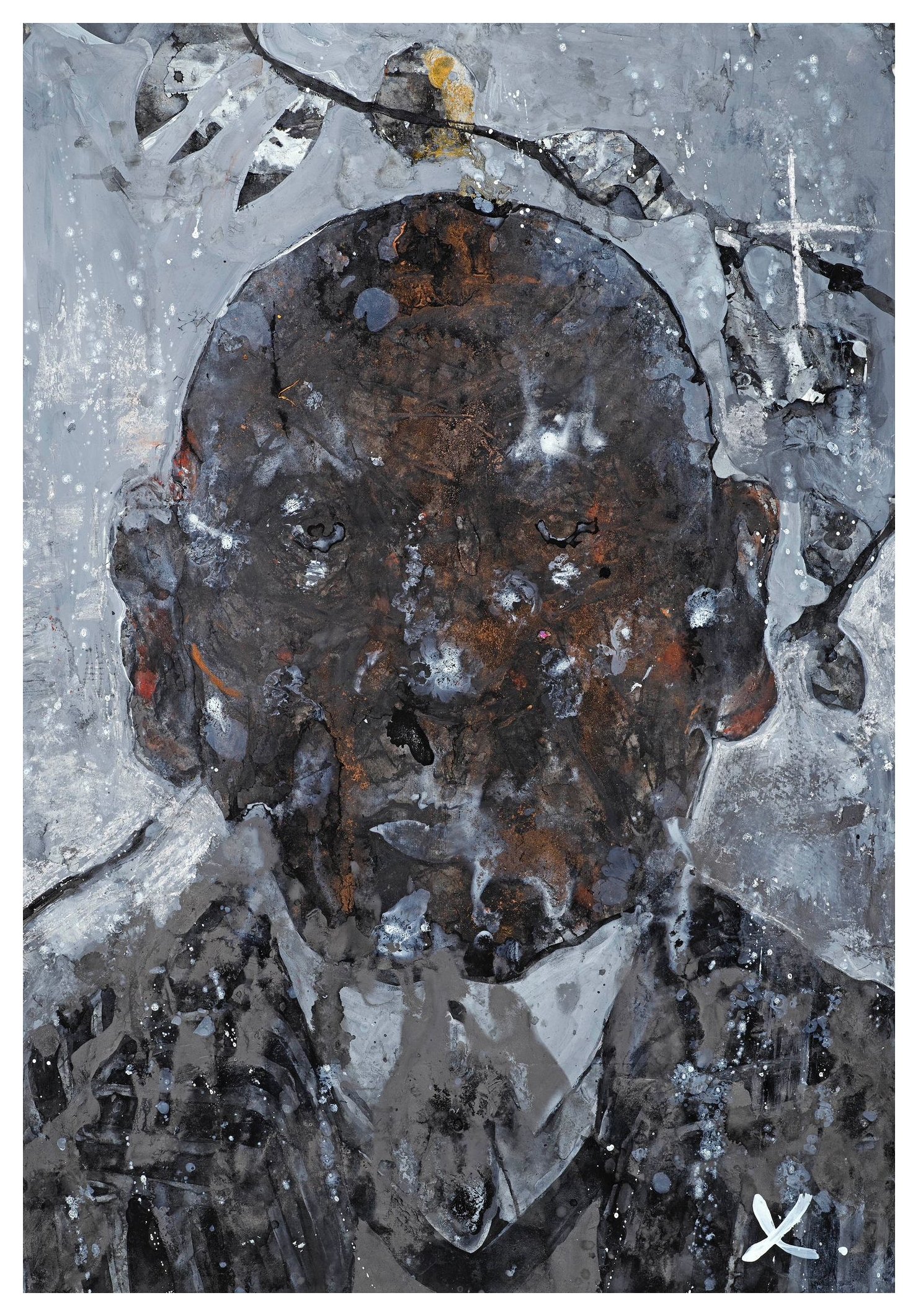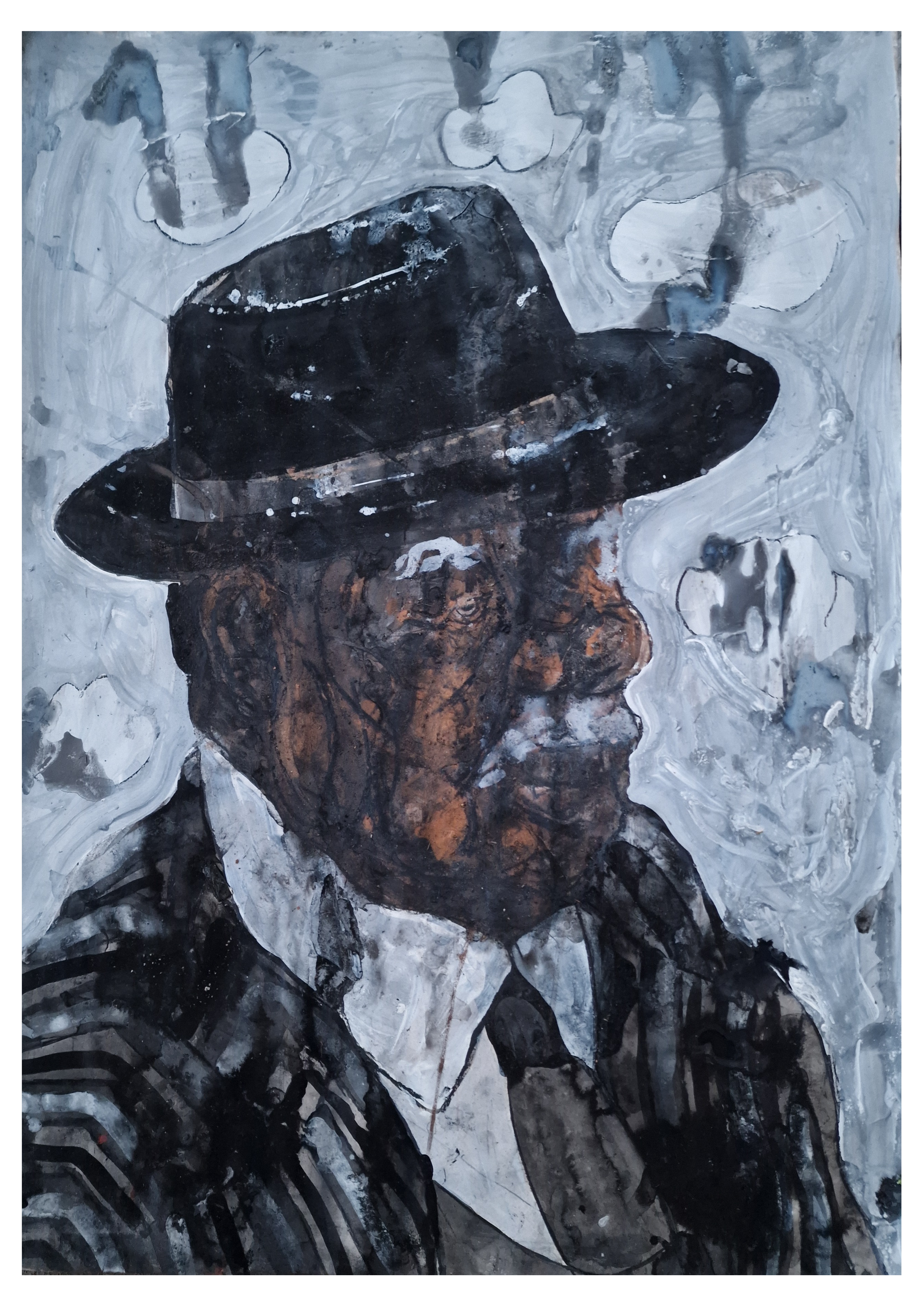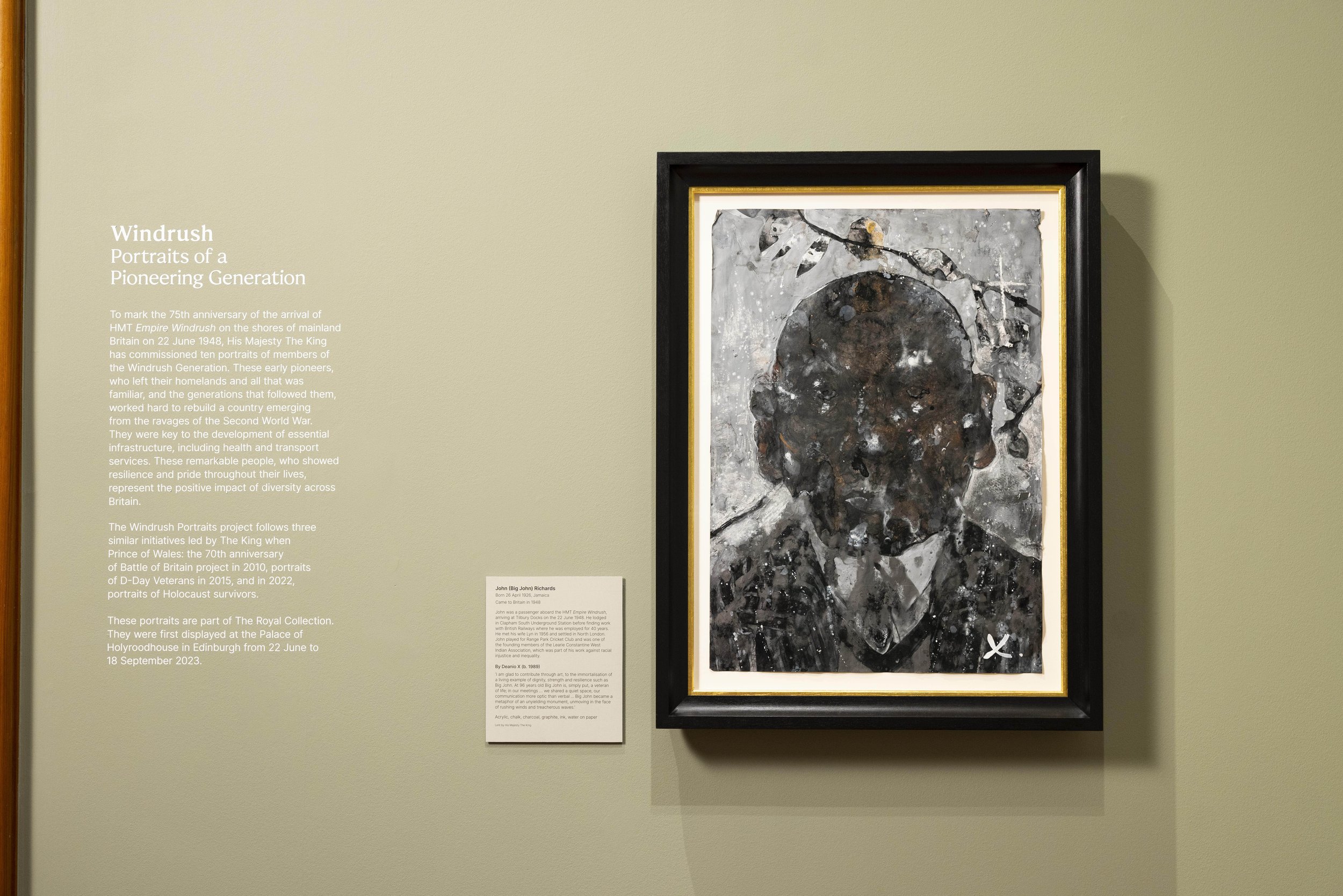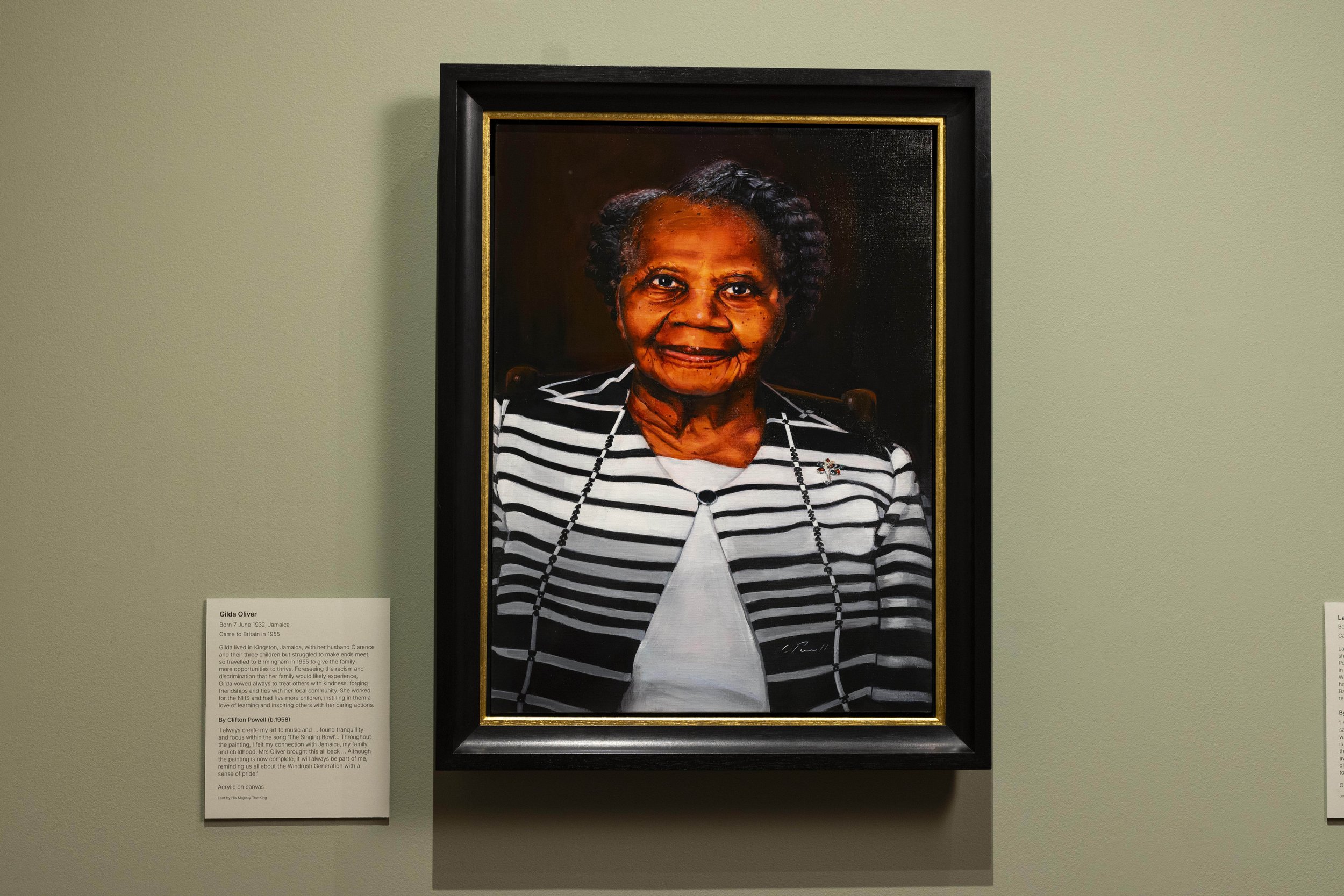“Rushing Winds”.
REFLECTIONS.
I wanted to portray John in an elemental style that referenced a bond to nature, timelessness and African DNA. I continue to develop this way of working to re-communicate corrupted narratives that have sought to detach modern African diasporas from the accomplishments of human history especially in the UK and its former colonies. .
This project to celebrate Caribbean pioneers who traveled the Atlantic on a British bannered boat, puts a necessary but selective spotlight on a recent chapter in the story of African, Caribbean and British relations.There is very much more to address and many histories to restore, which I will continue to do through my work.
In this moment, I am glad to contribute through art, to the immortalisation of a living example of dignity, strength and resilience such as Big John. At 97 years old Big John is simply put, a veteran of life; in our meetings - deliberately brief to prioritise his health and comfort - we shared a quiet space, our communication was more optic than verbal. He held my gaze as I sketched and through his eyes I observed a familiar strength of presence and a bittersweet stoicism. Big John and his generation were invited here, but the reception has been quietly catastrophic as demonstrated by ongoing deportations, detentions and indignities revealed by the Windrush scandal. Over the course of the painting, I considered the paradox of a welcome guest in a hostile environment. Big John became a metaphor of an unyielding monument, unmoving in the face of rushing winds and treacherous waves.
Working flat on the ground with all materials in reach, in this case acrylic, chalk, charcoal, graphite, ink and water, I sketched, poured, painted and printed to develop layers of natural sediment that would eventually become Big John's skin, scars and furrows. Working in this way invites a sense of collusion and competition with natural forces; pools of water accrue and respond to gravity and air pressure, to flow like rivers over the crinkled paper redistributing unfixed sediment from the convexes into the recesses of the paper. The original sketch goes through a process of destruction and rebirth. As the water erodes the charcoal, I respond by adding new marks, which carve pools and rivers in a near endless cycle.
As the water evaporates, a dry, stained terrain remains that looks like the surface of planets replete with valleys, craters and fault lines but in the shape and spirit of Big John - somehow, what is left is what is supposed to be there. Eventually an expression of John is sculpted from the wet matter and he is fit to stand his ground in any environment.


















